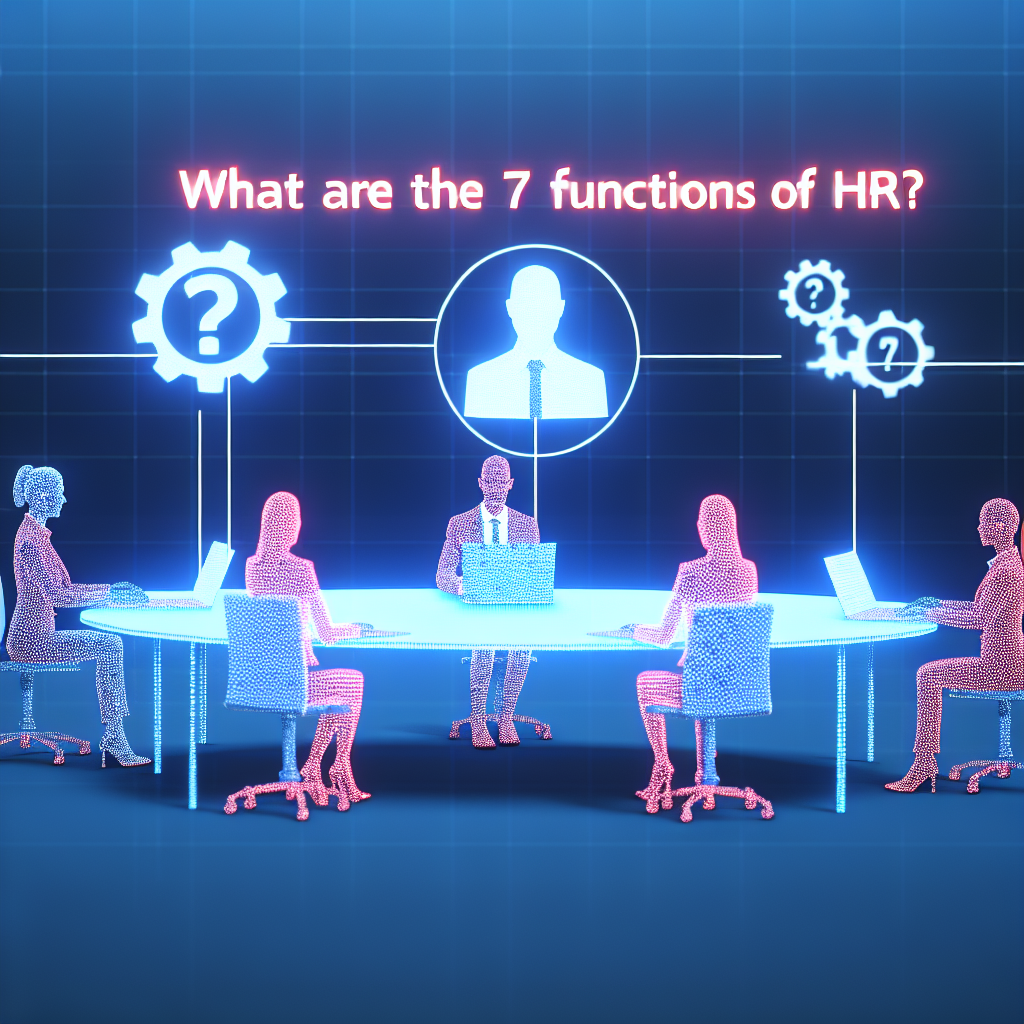
In today’s dynamic workplace, the Human Resources (HR) department stands at the forefront of cultivating and sustaining a productive workforce. As we move through 2024, an in-depth understanding of the various HR functions proves to be essential not only for compliance but also for fostering employee satisfaction and performance. Below, we will delve into the seven critical functions of HR, exploring their significance, current trends, and the various benefits they bring to both employees and organisations.
1. Recruitment and Selection
Significance: The recruitment and selection function is pivotal in identifying and hiring individuals who align with the organisation’s culture and strategic vision. Recruiting the right people can significantly enhance a company’s productivity and overall success.
Current Trend: In today’s fiercely competitive job market, HR professionals are leveraging an array of tools and technologies. Background checks, interviews, reference checks, and digital assessments are now common methods employed to identify candidates who best meet the organisational needs. The emphasis has shifted to a more analytical approach, utilising data-driven methods to improve hiring effectiveness.
Key Benefit: Efficient recruitment and selection processes result in heightened employee retention and job satisfaction. A well-chosen workforce can lead to a thriving workplace, ultimately driving business performance and profitability.
2. Training and Development
Significance: Training and development empower employees by equipping them with critical skills that align with business objectives. This function includes comprehensive activities, such as training sessions, coaching, mentoring, and various learning programmes that foster employee growth.
Current Trend: A noticeable trend is the shift towards continuous learning and professional development, with many organisations investing in upskilling initiatives. There is increasing recognition of the necessity for employees to adapt to changing market conditions and technological advancements.
Key Benefit: An engaged workforce that receives ongoing training and development experiences enhanced job satisfaction and improved performance. This, in turn, fosters organisational growth and innovation.
3. Employee Relations
Significance: Employee relations focuses on nurturing positive relationships between employees and their employers. This function plays a crucial role in maintaining a constructive company culture, resolving disputes amicably, and ensuring that workplace policies are equitable and well communicated.
Current Trend: Modern HR practices have begun to place greater emphasis on fostering a culture of open communication and regular feedback. Gathering insights from employees has become integral to making informed improvements to workplace culture.
Key Benefit: Strong employee relations lead to increased levels of employee well-being, loyalty, and engagement. These elements are key to achieving long-term growth and organisational success.
4. Performance Management
Significance: Performance management is about establishing clear performance expectations, delivering ongoing feedback, and conducting regular evaluations. This function ensures that employees receive the guidance needed to meet and exceed organisational standards.
Current Trend: The performance management landscape is evolving, moving away from traditional appraisal methods towards more dynamic evaluation techniques. Real-time feedback and continuous monitoring have emerged as valuable practices aimed at improving employee performance.
Key Benefit: Effective performance management not only enhances employee productivity but also fosters morale and satisfaction. When employees feel supported in their roles, the overall organisational effectiveness improves substantially.
5. Compensation and Benefits
Significance: An organisation’s compensation and benefits structure is crucial for attracting, retaining, and rewarding employees. This function encompasses payroll management, employee benefits like health insurance and retirement plans, and the development of fair and competitive compensation packages.
Current Trend: To remain competitive, companies are increasingly providing comprehensive benefits packages that include not only salary but also perks such as flexible working options, wellness programmes, and other incentives that respond to employee needs.
Key Benefit: A well-structured compensation and benefits package can dramatically influence employee morale and productivity. By reducing turnover and creating a more stable workforce, organisations can maintain a competitive edge in their respective markets.
6. Employee Records Management
Significance: Maintaining accurate employee records is fundamental for HR operations. This function involves managing data related to employment history, performance assessments, and other pertinent information that ensures compliance and operational efficiency.
Current Trend: There is a strong trend towards the adoption of digital HR systems that enhance data management processes. Utilising technology to streamline employee data management facilitates better compliance with employment regulations.
Key Benefit: Effective employee records management provides HR departments with accurate information that supports various HR initiatives, from recruitment to performance management and benefits administration.
7. Employee Relations and Legal Compliance
Significance: This function encompasses enforcing disciplinary actions, ensuring compliance with legal employment standards, and addressing employee complaints. Maintaining a fair and safe working environment is paramount to fostering a positive workplace culture.
Current Trend: Forward-thinking HR departments are focusing on crafting policies that not only address current employee grievances but also proactively prevent potential issues. The establishment of a fair and equitable workplace culture relies heavily on such preventive measures.
Key Benefit: A commitment to effective employee relations and rigorous legal compliance reinforces a positive company culture. Enhanced employee loyalty and engagement can result from a workplace that prioritises fairness and respect.
Conclusion
The seven fundamental functions of HR play a vital role in managing an organisation’s human capital. By placing significant emphasis on recruitment, training, employee relations, performance management, compensation, employee records management, and legal compliance, HR departments can cultivate a motivated and productive workforce. As HR professionals, embracing these functions can lead to remarkable organisational success and employee satisfaction.
For further insights and resources on HR functions, consider visiting HR.com and SHRM for a wealth of information tailored to your professional needs.
Vadim Kouznetsov is a distinguished entrepreneur and the visionary founder and CEO of JobXDubai.com, the UAE’s rapidly expanding job board. Renowned for his expertise in bridging the gap between job seekers and employment opportunities, Vadim has become a leading authority in the recruitment and job market of Dubai.
